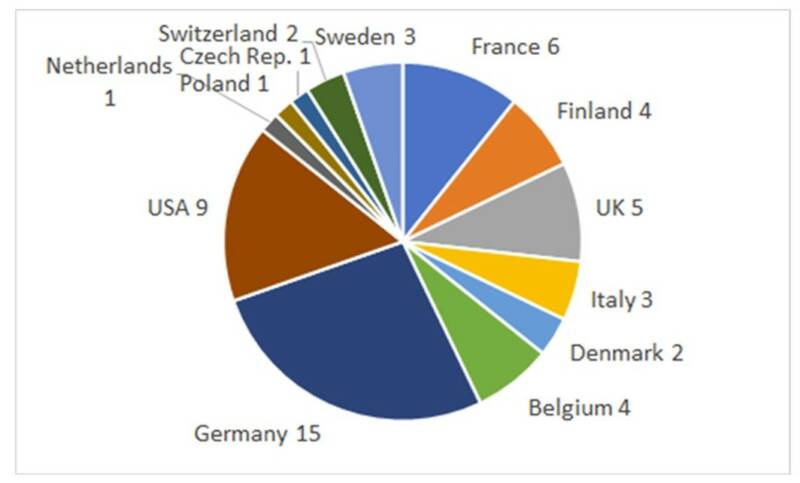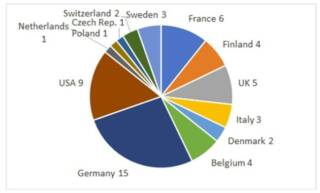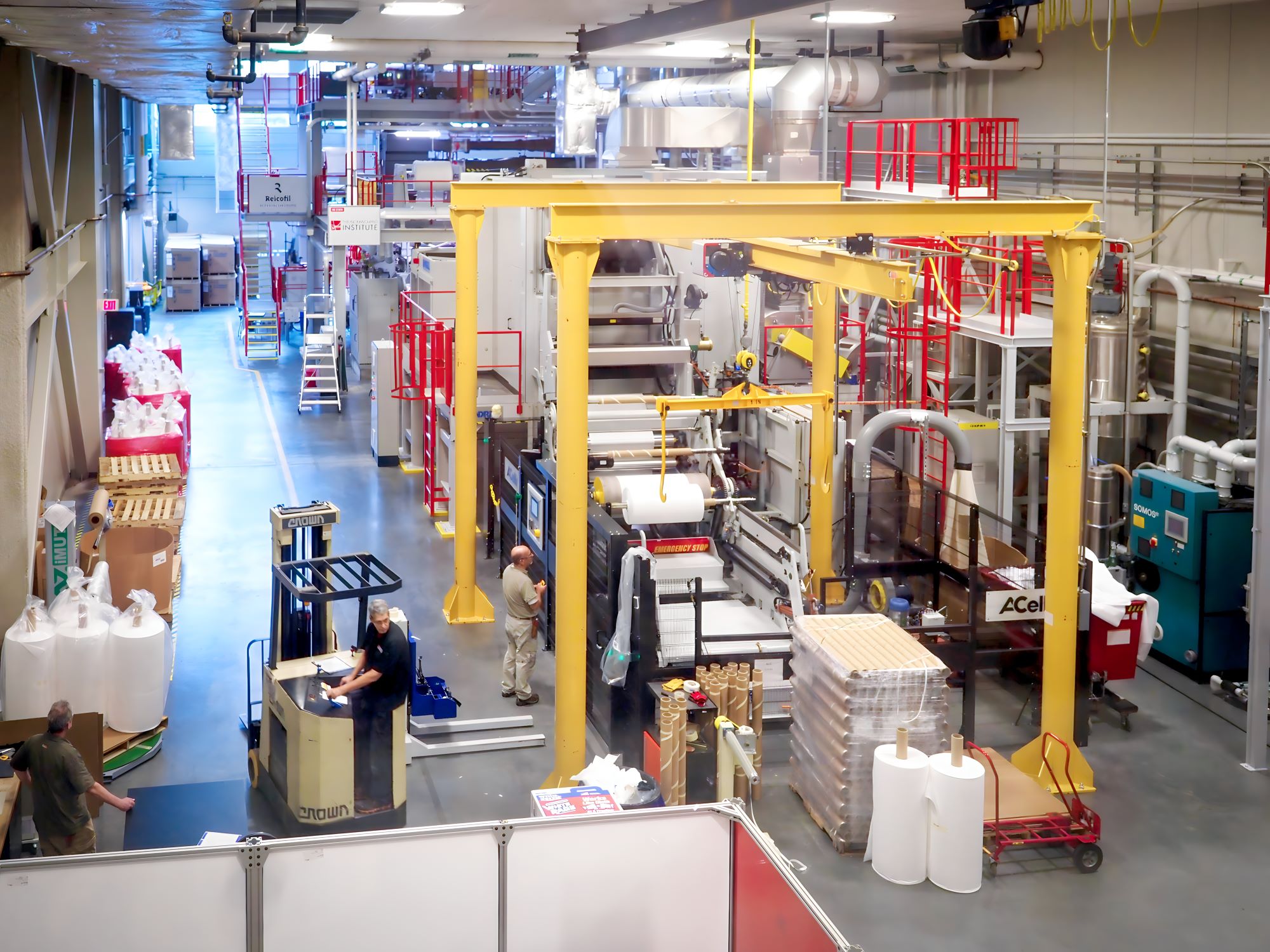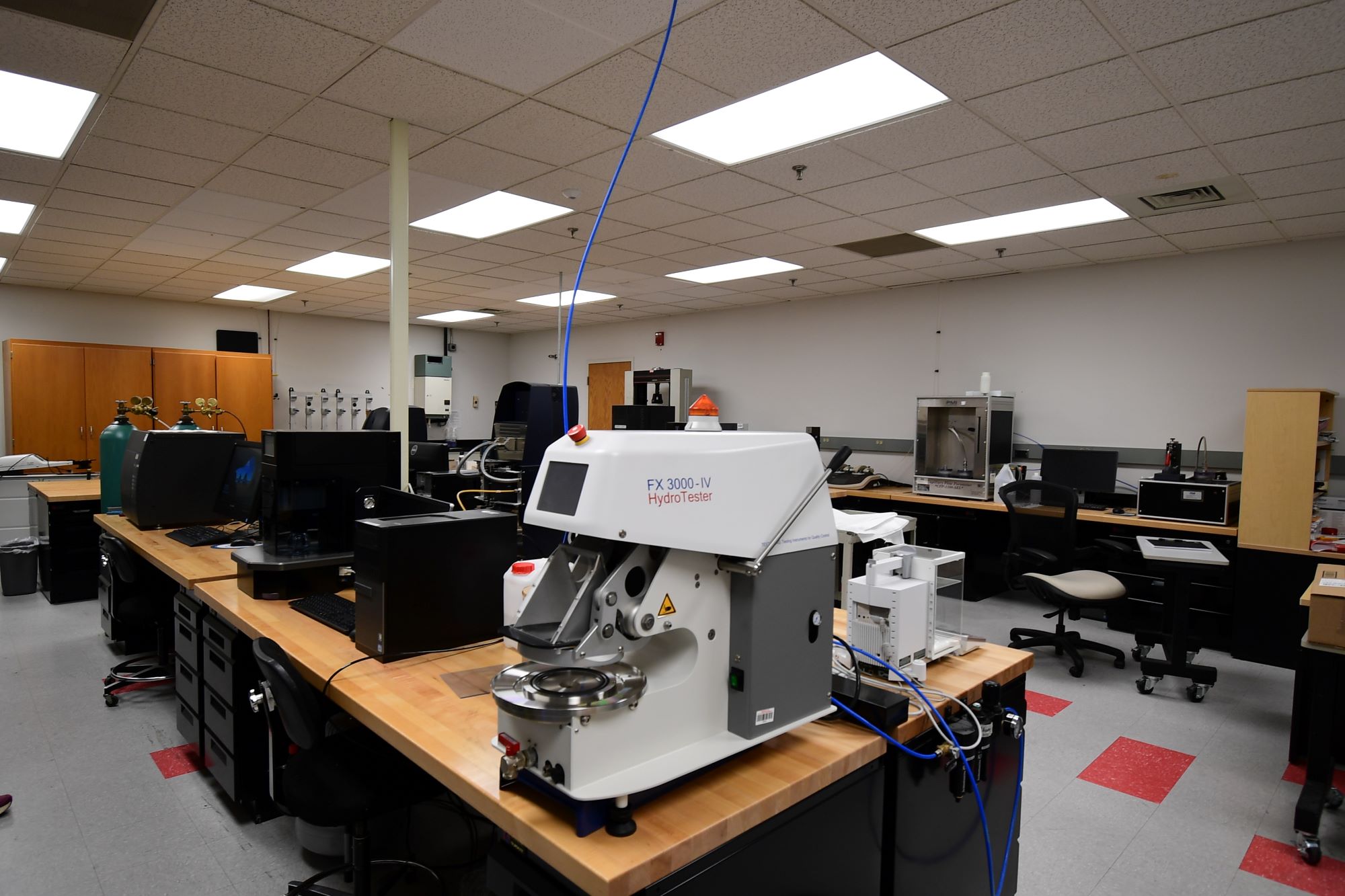Nonwovens – what are they?
Nonwovens are defined as “engineered fibrous assembly, primarily planar, which has been given a designed level of structural integrity by physical and/or chemical means, excluding weaving, knitting or papermaking” according to ISO 9092 Nonwovens Vocabulary (ISO, 2019). Along the technology innovations the terminology evolves, and experts have continuous discussions among nonwoven sector and stakeholders for updating the definitions. This can be done through standardisation bodies like ISO (International Organisation for Standardization), CEN (the European Committee for Standardization), ASTM (American Society for Testing Materials) and associations like EDANA (international association of nonwovens and related industries) and INDA (Association of the Nonwoven Fabrics Industry).
Nonwovens have a wide range of end use application areas e.g. in health care, medical, hygiene, insulation, construction, geotextiles, filters and agrotextiles serving customers from consumers to industrial sector. The main nonwoven technologies are airlaid, drylaid, wetlaid, spunmelt (spunlaid or meltblown or their combinations) and spunbonded (i.e. thermobonded spunlaid). Carded and spunlaid technologies share the top placings in the world nonwoven production (Fig 1). In Fig 1 unspun end-uses include acetate tow and unprocessed staple fibers, staple-based comprises drylaid (needlepunch, hydroentangle, thermal and resin bond), wetlaid and airlaid, polymer-based contains spunbond, composites and meltblown which all are one-step process (The Fiber Year 2024).

Figure 1 World nonwovens production in 2023 (Modified from the source: The Fiber Year 2024; 33, 140)
Fibre type, web forming technology and end use application determine the consolidation methods. The structural integrity for the fibrous web can be imparted mechanically, chemically or thermally. Needlepunching uses barbed needles and hydroentanglement fine high-pressure water jets for entangling fibers. The latter method known also as spunlace is often applied for carded and wetlaid webs. Wetlaying resembles paper making but differing in fibre length, fiber over length ratio and bonding type. Water is removed by draining, compressing and drying the fibrous web. Binders can be impregnated in a later stage. Thermoplastic fibres in the web, e.g. bicomponent fibres can be thermally bonded using heated calenders together with a pressure or hot air stream or ultrasonically. In chemical bonding a liquid-based chemical bonding agent can be impregnated, coated, sprayed or printed on the web.
Nonwovens are applied in wide range of areas e.g. in health care, medical, hygiene, insulation, construction, geotextiles, filters and agrotextiles.
The properties of nonwovens can be tailored with a range of finishing treatments such as stretching, perforating or providing repellency with a chemical treatment. Roll goods of nonwovens are further prepared for the products by slitting, cutting, folding, sewing or heat sealing. (EDANA, n.d.)
Characterization of nonwovens
Characterization provides critical and specific information on the properties of the nonwovens and nonwoven products whether they are applicable for their end use purpose. Characterization of nonwovens concerns the structural properties of the fibrous assembly and the properties of the components forming the structure, such as fibers, treatments, chemical binders and fillers. (Mao et al. 2022; ISO, 2019.)
There are many reasons to test nonwovens and their raw materials. The tests are performed e.g. to ensure the quality of the fibers and nonwovens, to get understanding of the materials and the finished products, to test whether the materials meet the regulations and to control the process. The tests could be categorized into mechanical and structural tests and depending on a case there can be e.g. thermal testing, fluid transportation etc. It is good to notice that usually it is laborious and expensive to test all the properties. Therefore, it is essential to perform the tests which tell the most about the material. For this reason, it’s important to understand the fundamentals of the process, product and test methods to test right things and correctly. (The Nonwovens Institute Part 1 2024.)
When something is tested, the test is based on an instruction. For testing nonwovens there are standard test methods defined by standard authorities like ISO, CEN, ASTM, etc. There are as well methods established by industry associations like EDANA, INDA, etc. or by companies. Additionally, there are nonstandard tests usually designed for specific research purposes or to measure properties for which there is no standard or industry method yet. (Russell 2022.) Several different methods are used to test nonwovens, and the same property can be tested based on different standards in different locations. The units used in the methods may differ thus hindering the comparing of the results obtained.
Piloting of nonwovens’ manufacturing processes
Piloting of nonwovens means a preindustrial scale of production (Picture 1) following the laboratory scale trials and it is usually an important part of scaling up the process from laboratory scale into industrial scale. Piloting can imitate the continuous industrial production process line in a smaller scale, and it can represent a part of the process or the total process line. The supply of raw materials is usually in smaller batches because their still scarce availability during the development phase. Also, the process speed, product dimensions and the productivity are usually lower than in the full-scale industrial process. However, pilot scale testing allows examining operational variables more widely than in laboratory scale.
Mapping actions in SUSTAFIT project
SUSTAFIT (Sustainable fit-for-purpose nonwovens) project studies and promotes the sustainability of nonwovens. The topic is studied from different perspectives to improve sustainability in raw materials, processing methods, recyclability, and business models. One task in the project was to map the available research infra of nonwovens’ piloting and characterization service providers for testing and piloting.
The study was made by familiarizing ourselves with information available in open sources in Europe and in USA limited to company web pages through nonwoven associations as well as visiting trade fairs and one research institute. Altogether 60 companies, research and testing organisations, were mapped including the applicable offices of multinational corporates. This study covers 12 European countries and USA. Mapping was categorised by equipment, testing, piloting and research providers but also based on the most common nonwoven technologies and some test methods as well certificates. The number of the service providers in each country is shown in Figure 2. Germany (n=15) in Europe, USA (n=9), France (n=6) and UK (n=5) represent the highest amounts in this take. Finland and Belgium both have four detected service providers while other countries (Sweden, Italy, Denmark, Switzerland, Czech Republic, Poland and Netherlands) have less than four. The detected information is based on the situation available on the web pages spring 2024 and it is prone to change.


Figure 2 Distribution and the number of the service providers per country
The mapped piloting and service providers within the project were analyzed to provide a snapshot of the availability and the distribution of the services among the providers. Testing services are the most common service type (n=36) while piloting (n=18), research (n=17) and equipment or technology (n=18) providers have an equal share. However, the same provider may have several types of services. Meltblown technologies related services were the most common ones when looking at the supply from the nonwoven technology perspective in this search.
Case Nonwovens Institute – a deeper insight into services overseas
In the area of piloting nonwovens manufacturing, NWI is the only facility in North America. A couple of SUSTAFIT project experts had the opportunity to visit the Nonwovens Institute (NWI) which is in North Carolina, USA. NWI is kind of unique in its area of expertise because they are focused only on nonwovens, and there is a great variety of activities related to them. NWI provides fundamental research, piloting, training, product development, incubation, and analytical tests. Several students, mainly PhD students, are yearly involved in the fundamental research activities at NWI. The industry needs highly educated staff for research and development, and this is the demand that NWI answers.
The piloting in NWI includes e.g., spunbond and meltblown, staple fiber, fiber spinning, needle punching, hydroentangling, thermal bonding, and web composite capability (Photo 1). NWI’s training activities include short courses for anyone interested as well as customized training courses for companies. NWI does a lot of product development and problem solving for companies to create new and innovative nonwoven solutions. Limited manufacturing called incubation is especially designed to help the companies to test the markets with new products. The customers of the Nonwovens Institute are mainly from North America and Europe but for training, there have been participants from many regions in the world.

Photo 1 Spunbond and hydroentangling laboratory in the Nonwovens Institute (Photo: The Nonwovens Institute)
In analytical test services (Photo 2), NWI is mainly focused on polymers, fibers, and nonwoven fabrics. For products, the test methods are very product-specific, and in this area, NWI is concentrated mainly on hygiene, filtration, wipes, and automotive product testing. In NWI they have in use approximately 50 standardized tests and a lot of other test methods. In the analytical area, NWI offers testing services, and test method development for companies. NWI has a long history in research and nonwoven characterization, and they have a good understanding of what to analyze. For example, according to Behnam Pourdeyhimi (2024), the executive director of NWI, in many cases the most important items to be analyzed in nonwoven fabrics are fiber size, fiber orientation, and solid volume fraction as these define the structure of a nonwoven.

Photo 2 Analytical and physical testing laboratory in NWI (Photo: The Nonwovens Institute)
Conclusions
Development and manufacturing of sustainable nonwovens solutions necessitates functional and reliable testing and piloting possibilities. One of the main key issues towards sustainability is to have and maintain good quality in raw materials and products. In SUSTAFIT project it was searched for this kind of infrastructure and actors in Europe and in USA to help companies.
Mapping provides information on the availability of testing and piloting services for the nonwoven stakeholders. In broader sense, mapping can help to understand the role of the different actors on the field. This will also help in establishing ecosystems and contribute to creating new business models.
Mapping has been conducted during 2023 as well as in the spring of 2024, and it has been limited only to Europe and USA at this point. Only open sources of information were used. Collection of data is not exhaustive, and it may contain errors. One must also notice that it covers only a part of the actors of this sector due to the SUSTAFIT project objectives and time limits.
References
EDANA. n.d. How are nonwovens made? European Disposables and Nonwovens Associations. Accessed 23.2.2024: https://www.edana.org/nw-related-industry/how-are-nonwovens-made
Hautamäki, P. Raipale, N. 2024. Sustainable Nonwovens of the Future – From Research into Business Opportunities. Tampereen ammattikorkeakoulun julkaisuja. Sarja B. Raportteja 156. Tampere. Referred 5.9.2024. https://urn.fi/URN:ISBN:978-952-7266-99-1
ISO International Standardisation Organisation. 2019. Nonwovens – Vocabulary.
Mao, N., Russell, S.J. & Pourdehimi, B. 2022. Characterisation, testing, and modelling of nonwoven fabrics, in Russell, S.J. (ed.) Handbook of Nonwovens, 2nd Edition, Elsevier Ltd.
Pourdeyhimi, B. 2024. Nonwoven Fabric Property Development and Characterization Short Course, 4.-7.6.2024. Raleigh, USA.
Russell, S. J. 2022. Handbook of Nonwovens (2nd Edition) – 12.1 Introduction: Characterisation of Nonwoven Fabrics. (pp. 509). Elsevier. https://app.knovel.com/hotlink/pdf/id:kt0131PTP1/handbook-nonwovens-2nd/introduction-characterisation
The Fiber Year 2024. 2024.World Survey on Textiles and Nonwovens. The Fiber Year 2024 GmbH. Switzerland. 420 p.
The Nonwovens Institute. 2024. Nonwoven Fabric Property Development & Characterization. Part 1.
Authors
Minna Varheenmaa
Lecturer in Textile and material engineering in Tampere University of Applied Sciences
She managed the Sustainable and Smart Textiles project in the Tampere region. In SUSTAFIT, Minna has made contributions to the project especially by gathering information on service providers for nonwoven testing and piloting.
Piia Kanto
Senior Lecturer in laboratory engineering in Tampere University of Applied Sciences
In the SUSTAFIT project, Piia worked as an expert and her tasks included e.g. study of consumer engagement for sustainability in single-used nonwovens, mapping actions of nonwovens service providers and mapping of disintegration, biodegradability and compostability testing of nonwovens.
Main photo: Erica Dahlström-Dezonne

